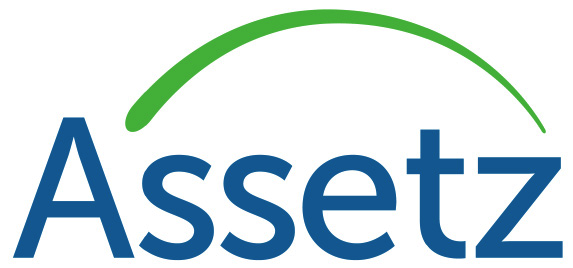-

-

+91 78295 54411
- Enquire Now


 +91 78295 54411
+91 78295 54411
Mortgages, fundamental to real estate, are legal agreements where borrowers secure funds from lenders to purchase property by pledging the property as collateral. Metaphorically speaking, they are the keys that unlock the doors to homeownership for countless people, turning dreams of owning a home into reality. But mortgages are more than just tools for buying property; they are crucial for keeping our economy stable and fostering wealth accumulation. Understanding mortgages is important for navigating real estate and making informed decisions about property ownership.
In this guide, we will understand mortgage loans, their significance, and the various types of mortgage loans.
A mortgage is a financial agreement between a lender and a borrower, typically a bank or mortgage lender, that facilitates the purchase of real estate property. Putting a property on mortgage essentially means you are taking a loan from a bank that allows you to purchase a property, using the property itself as security. If repayments are not made, the lender can reclaim the property through a legal process. You gradually build ownership through monthly payments, including principal and interest, spread over a set term. This set term is typically 10 to 30 years depending on the age of the borrower, their financial standing and the lending policies.
Commonly, a mortgage involves the following key components:
Mortgages are important tools that enable individuals and families to achieve homeownership by spreading the cost of purchasing a property over an extended time period.
Buying a home is a significant investment, and the type of mortgage you choose highly impacts your financial journey. Here’s a simplified breakdown of the different mortgage options that are available:
A fixed-rate mortgage is a loan where the interest rate stays constant throughout the entire term of the loan or for a specific period chosen by the borrower. This means that your monthly payment stays constant, providing predictability, stability and protection against rising interest rates.
With a fixed-rate mortgage, borrowers agree to a specific interest rate, which remains unchanged for the duration of the loan term, typically 10, 15, 20, or 30 years. This allows borrowers to budget more effectively since their monthly payments remain consistent.
Variable-Rate Mortgages (VRMs), also known as floating-rate mortgages, offer borrowers a home loan option with a fluctuating interest rate. Unlike fixed-rate mortgages, floating-rate mortgages don’t lock in the interest rate for the entire loan term. Instead, the interest rate can change regularly, depending on the REPO Rate of the RBI.
Repo rate is the rate at which the Reserve Bank of India lends money to commercial banks in the event of any shortfall of funds. The repo rate is used to control inflation. In the event of inflation, the RBI increases the repo rate as this acts as a disincentive for banks to borrow from the RBI. This ultimately reduces the money supply in the economy and thus helps in arresting inflation.
While fixed-rate and floating rate mortgages are common choices, there are specialised mortgage products catering to specific needs. Below are three such options:
Loan against Property, commonly known as LAP, allows borrowers to utilise their residential or commercial properties that they already own, as collateral to secure funds from financial institutions. Borrowers can secure loans for various personal or professional needs by mortgaging their property.
The repayment of LAP is typically done on an Equated Monthly Instalment (EMI) basis, with the property’s original documents deposited with the lender until the loan is fully repaid. This type of mortgage loan often comes with competitive interest rates and can have a tenure of up to 15 years.
Second Mortgage Loans, also known as top-up loans on existing home loans, are offered by banks and Non-Banking Financial Companies (NBFCs) for properties that are already under a mortgage. Borrowers who have previously purchased properties through loans can avail of additional funds by applying for a second mortgage loan or a top-up loan.
The loan eligibility and terms are determined based on the borrower’s credit score and repayment history. Borrowers are required to start paying EMIs for the second mortgage loan or the top-up loan in addition to their existing home loan EMIs.
Reverse mortgages, meaning specialised home loans available to homeowners aged 62 or older, allow them to convert a portion of their home equity into cash while retaining ownership of the property.
Reverse mortgages enable homeowners to access their home equity without making monthly mortgage payments. Instead, the loan balance accumulates over time, and repayment is typically deferred until the borrower moves out, sells the home, or passes away. These mortgages can provide supplemental income for retirees; however, borrowers should continue to pay insurance, property taxes, and maintenance costs.
Choosing the best mortgage for your needs involves a careful evaluation of several key factors. Some crucial influences are:
Before beginning your home search, understanding the mortgage process is crucial. These are the key steps you need to follow:
When applying for a mortgage, you must provide various documents to verify your income, assets, and financial history. Common document requirements for mortgage include:
Additionally, if you are self-employed or have non-traditional sources of income, you may need to provide additional documentation to verify your financial stability.
Closing on a mortgage involves several key steps:
From application to approval and disbursement, mortgage processing time can take anywhere from 15 days to 30 days, on a case-to-case basis.
In conclusion, understanding the types of mortgage options is paramount for homebuyers. Fixed-rate mortgages offer stability, while floating-rate mortgages may have lower initial payments but fluctuate based on the RBI Repo Rate.
The in-house Mortgage Team at Assetz Property Group will guide you through such crucial decisions by working closely to understand your financial situation, explain the various loan options, the tailor-made mortgage products and advocate for your needs throughout the entire home-buying journey. This ensures you make informed decisions and turn your dream of homeownership into a reality.